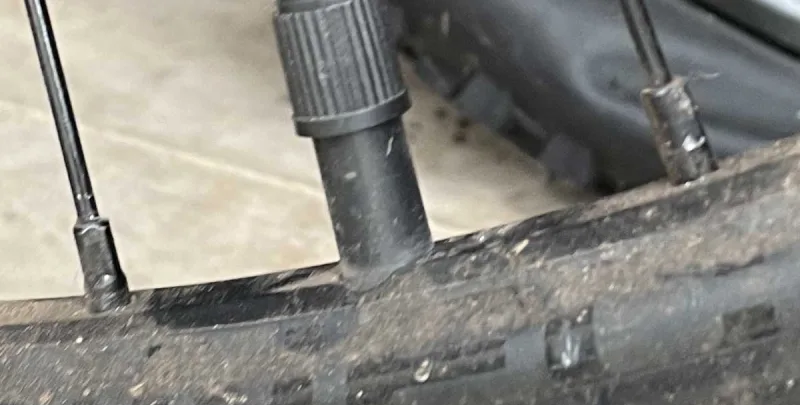Introduction:
Bicycle tyres are an essential component that significantly impacts the performance and comfort of a cyclist's ride. Making sure you have the correct tyre fitted to you cycle can help to improve your overall cycling experience and just like with a car, it is important to check your tyres are in good condition on a regular basis and that they have sufficient pressure. This is especially important if you use your bicycle for commuting on roads.
There are a wide range of tyres available on the market, and selecting the right ones can be overwhelming. You can of course buy your tyres online, but if in doubt, we recommend that you speak to a bicycle retailer, they should have excellent knowledge and be able to marry up the correct tyres for your cycle based on your type of usage.
So what are the different types of tyre generally available to purchase and what are the factors and features you need to consider to maximise your cycling.
Understanding the different Bicycle tyre types available.
- Road Bike Tyres: These as the name suggests are designed for cycles primarily used on the road and will provide speed and efficiency on paved roads, road bike tyres are typically narrower than other tyre types, ranging from 23mm to 32mm in width. They feature slick or lightly treaded patterns to reduce rolling resistance and enhance grip on smooth surfaces.
- Mountain Bike Tyres: These tyres are manufactured to tackle off-road terrains such as dirt trails, forests, farmland, rough tracks, gravel paths, and rocky surfaces. Most mountain bike tyres are tubeless and not really designed for prolonged road use, they can be used safely on a road, but you may end up with uneven wear. Mountain bike tyres come in various widths, generally ranging between 55 and 61 mm offering different levels of traction and durability. They often feature aggressive treads to enhance grip and control on uneven surfaces.
- Hybrid/Commuter Bike Tyres: Hybrid bike tyres combine elements from both road and mountain bike tyres. Generally speaking, they are between 30mm- 50mm in width and they strike a good balance between speed and durability, making them suitable for a variety of surfaces, including paved roads, gravel paths, and light off-road trails.
Hybrid tyres typically have a smoother tread compared to mountain bike tyres but are wider than road bike tyres for increased stability and comfort. These are a really good choice if you use your cycle for a variety of purposes and do not require the speed of a road bicycle tyre or the enhanced ruggedness of a mountain bike tyre.
Bike Tyre Size and Width
- Bicycle tyre size is usually indicated by two numbers, such as 700x25c or 26x2.1. The first number refers to the tyre's diameter, while the second number denotes the tyre's width. The width influences the performance and comfort of the ride. Please see above for some approximate tyre sizes and their usual uses.
- Wider tyres provide increased stability, better traction, and a more comfortable ride, especially on rough terrains. However, they may come at the expense of increased rolling resistance and reduced speed. Narrower tyres, on the other hand, offer less rolling resistance, making them ideal for road cycling and achieving higher speeds. Your cycle shop will be able to help you choose the right type of replacement tyres for your cycle and guide you as to the merits of individual brands available.
Tread Patterns:
Tread patterns play an important role in a tyre's performance on different surfaces. Think about your intended use before settling on a pattern. There are three primary types of tread patterns:
- Slick: Slick tyres have a smooth, tread-less surface, which maximizes contact with the road for excellent traction on pavement. They are commonly found on road bike tyres and are ideal for smooth, dry surfaces but of course, provide little or no grip on wet surfaces or in the rain.
- Semi-Slick: As the name suggests, semi-slick tyres feature a combination of slick and lightly treaded sections. They provide increased grip on wet or loose surfaces while maintaining low rolling resistance on smoother terrains. Hybrid and commuter bike tyres often have semi-slick patterns.
- Knobby: These heavily treaded tyres provide the best grip and are primarily found on mountain bikes. Knobby patterns feature deep, aggressive lugs that offer excellent traction on loose, muddy, or rocky surfaces. They are the best choice for off-road conditions but may have higher rolling resistance on pavements and roads, and as mentioned, used on a regular basis on these surfaces, you may get an uneven wear.
Tyre Pressure:
So many cyclists fail to check their tyre pressure on a regular basis, but it is important to do so. Maintaining the correct tyre pressure is crucial for optimal performance, safety, and comfort. Each tyre has a recommended pressure range indicated on its sidewall, usually given in pounds per square inch (PSI) or bar. Higher pressures reduce rolling resistance, but they may sacrifice comfort and traction. Lower pressures increase grip and absorb shocks better, but they may result in sluggishness and increased risk of pinch flats. Rider weight, terrain, weather conditions, and personal preference all play a role in determining the ideal tyre pressure. It is essential to regularly check and adjust tyre pressure to ensure a safe and enjoyable ride.
We suggest obtaining a couple of good quality cycle pumps, one that you can keep at home and a smaller device that you can carry with you when out and about.
Conclusion:
Tyres are often overlooked by cyclists, but just like with a car, they do need to be looked after and checked on a regular basis. Selecting the right bicycle tyres is a vital decision that can significantly enhance your cycling experience and by choosing the right tyre for the right terrain, can help to keep you safe.
Understanding the different tyre types, sizes, tread patterns, and optimal pressure ranges will ensure you can make an informed choice based on your riding style, terrain preferences, and performance needs. Whether you are a road cyclist, mountain biker, or urban commuter, the right tyres will contribute to a smoother, safer, and more enjoyable ride.
Assetsure are a specialist provider of bicycle insurance, if you require a quotation for your bicycle, please click here to be taken to our online Bicycle Insurance quote facility, or call us on 0208 0033 190


























